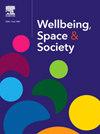Luminous threats: The health impacts of artificial nighttime light on metabolic and mental health: A scoping review
IF 2.2
Q2 GEOGRAPHY
引用次数: 0
Abstract
Introduction
Artificial light at night (ALAN) has been increasingly recognized as a potential disruptor of human health, affecting both metabolic and mental well-being. Growing evidence links ALAN exposure to conditions such as obesity, hypertension, type 2 diabetes mellitus (T2DM) and depression.
Objective
To conduct a scoping review of the available scientific literature up to September 2024, focusing on the impact of ALAN on metabolic and mental health outcomes. The review also aims to identify existing gaps in the research and provide recommendations for future studies and public health interventions.
Material and Methods
This review included studies from databases such as PubMed, Google Scholar, and Scopus. The inclusion criteria encompassed publications presenting empirical data and clinical trials in English and Spanish that assessed ALAN exposure and health outcomes.
Results
A total of 32 studies were reviewed, with a combined sample size exceeding 1.6 million participants. Study designs varied and included large-scale cohort studies, cross-sectional analyses, and randomized clinical trials. Associations between ALAN exposure and metabolic disorders (n = 14), hypertension (n = 6), T2DM (n = 5), and mental health disorders (n = 7) were identified. Findings consistently suggest that ALAN contributes to chronodisruption, impacting metabolic and psychological health.
Conclusions
ALAN is a significant environmental factor contributing to adverse health outcomes, particularly metabolic disorders and mental health disturbances. While findings suggest actionable interventions, further longitudinal studies are required to confirm causality and explore preventative strategies.
夜光威胁:人造夜间灯光对代谢和心理健康的影响:范围综述
夜间人造光(ALAN)越来越被认为是人类健康的潜在破坏者,影响着新陈代谢和精神健康。越来越多的证据表明,ALAN暴露与肥胖、高血压、2型糖尿病和抑郁症等疾病有关。目的对截至2024年9月的现有科学文献进行范围综述,重点研究ALAN对代谢和心理健康结果的影响。该审查还旨在确定研究中存在的差距,并为未来的研究和公共卫生干预措施提供建议。材料和方法本综述包括来自PubMed、谷歌Scholar和Scopus等数据库的研究。纳入标准包括以英语和西班牙语发表的评估ALAN暴露和健康结果的经验数据和临床试验的出版物。结果共回顾了32项研究,总样本量超过160万。研究设计多种多样,包括大规模队列研究、横断面分析和随机临床试验。发现ALAN暴露与代谢障碍(n = 14)、高血压(n = 6)、T2DM (n = 5)和精神健康障碍(n = 7)之间存在关联。研究结果一致表明,ALAN有助于时间紊乱,影响代谢和心理健康。结论salan是导致不良健康结局的重要环境因素,尤其是代谢障碍和精神健康障碍。虽然研究结果提出了可行的干预措施,但需要进一步的纵向研究来确认因果关系并探索预防策略。
本文章由计算机程序翻译,如有差异,请以英文原文为准。
求助全文
约1分钟内获得全文
求助全文
来源期刊

Wellbeing Space and Society
Social Sciences-Social Sciences (miscellaneous)
CiteScore
2.70
自引率
0.00%
发文量
46
审稿时长
124 days
 求助内容:
求助内容: 应助结果提醒方式:
应助结果提醒方式:


